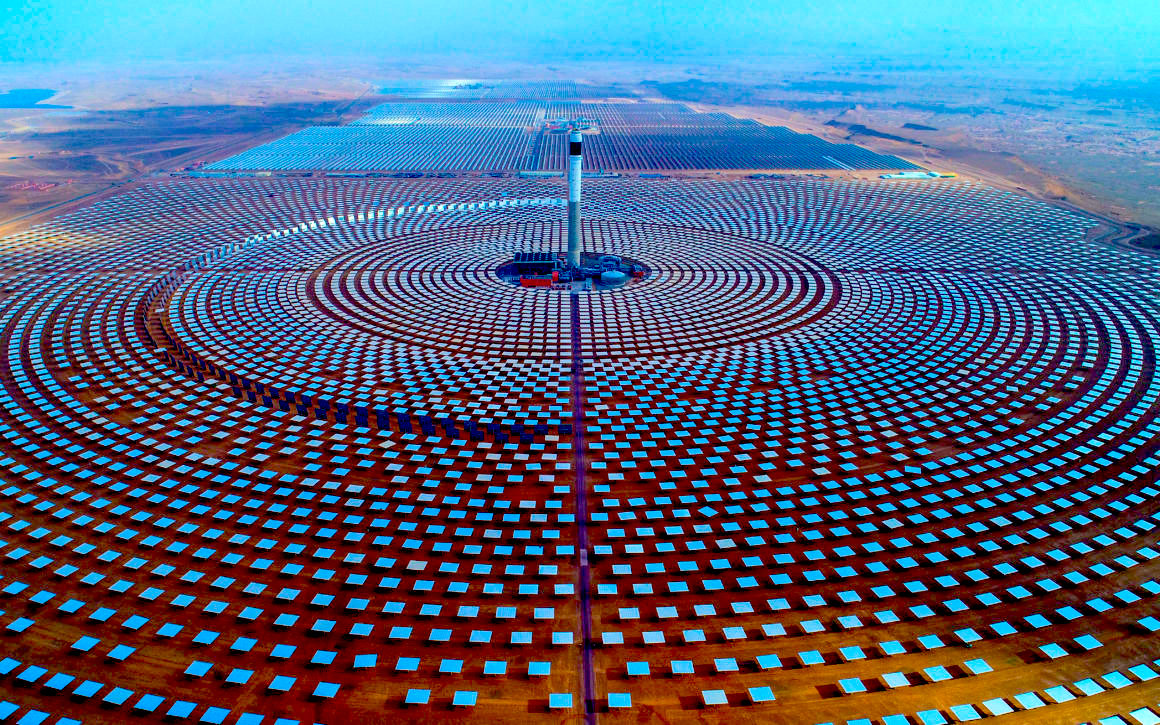Concentrated Solar Power (CSP) Technology Work

Concentrated Solar Power (CSP) technology uses mirrors or lenses to concentrate sunlight onto a small area, converting solar energy into heat. This heat is then used to generate electricity through conventional steam turbines or other heat engine systems. Here's how CSP technology works:
Solar Concentration: CSP systems use mirrors or lenses to concentrate sunlight onto a small receiver, increasing the intensity of solar radiation. There are several types of CSP technologies, including parabolic troughs, linear Fresnel reflectors, dish/engine systems, and solar power towers, each with its unique configuration for concentrating sunlight.
Solar Receiver: The concentrated sunlight is directed onto a solar receiver, which is typically located at the focal point of the concentrating system. The receiver contains a heat-absorbing medium, such as a heat transfer fluid (HTF), molten salt, or a solid material, which absorbs the solar energy and heats up.
Heat Transfer: The heat absorbed by the receiver is transferred to the heat transfer fluid or thermal storage medium circulating through the receiver. In some CSP systems, the heat transfer fluid is used directly to generate steam, while in others, the heat is stored for later use in thermal energy storage (TES) systems.
Steam Generation: In CSP systems that use steam turbines, the heat transfer fluid is used to generate steam by heating water in a separate heat exchanger. The steam is then fed into a turbine, where it expands and drives a generator to produce electricity. The electricity generated by the turbine is then transmitted to the grid for distribution to consumers.
Thermal Energy Storage (TES): Some CSP systems incorporate thermal energy storage to store excess heat generated during periods of high solar irradiance. Thermal energy storage allows CSP plants to continue generating electricity during cloudy periods, at night, or during peak demand periods when solar energy production is insufficient. Molten salt, molten sand, or other phase-change materials are commonly used for thermal energy storage in CSP systems.
Grid Integration: The electricity generated by CSP plants is fed into the electrical grid for distribution to consumers. CSP plants can be designed with grid-friendly features, such as grid-following control systems, ramping capabilities, and dispatchability, to provide stable and reliable power output and support grid integration.
Hybridization: Some CSP plants are hybridized with fossil fuel-fired generators or other renewable energy sources, such as biomass or geothermal energy, to provide additional flexibility, reliability, and dispatchability. Hybrid CSP systems can enhance grid stability, improve energy reliability, and reduce dependence on fossil fuels.
Overall, Concentrated Solar Power (CSP) technology harnesses the concentrated power of sunlight to generate electricity through thermal energy conversion. By utilizing solar concentration and thermal energy storage, CSP systems can provide reliable, dispatchable, and renewable power to meet electricity demand while reducing greenhouse gas emissions and supporting a transition to a clean energy future.
Thank you,